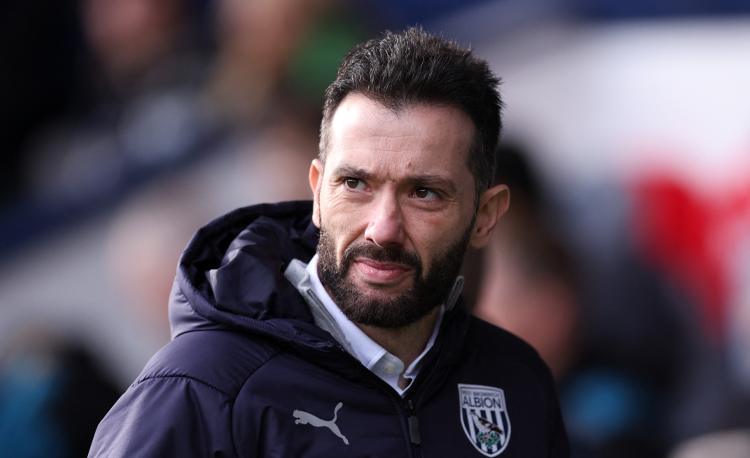You are viewing 1 of your 1 free articles
Diagonal balls and regains
This session looks at the use of diagonal balls from defenders and midfield players into wide and attacking players, and is designed to isolate opponents by moving play from confined areas of the pitch to open space.
| Area | 70x90 yards |
| Equipment | Balls, cones, goals |
| No. of Players | 11v11 |
| Session Time | Main session 30mins, Progressions 20mins |
This session looks at the use of diagonal balls from defenders and midfield players into wide and attacking players, and is designed to isolate opponents by moving play from confined areas of the pitch to open space.
Our analysis at Southend United shows there is a direct correlation between diagonal balls being played and chances created, both in training and match day situations, so this is an important session for us that we like to practise regularly.
What do I get the players to do?
We set up in a 4-3-3 formation, as shown, with the keeper feeding the ball out from the back (1a). Straight away, we encourage defenders to play diagonal balls, with opposition wingers fixed in wide areas at all times. When a full attack develops it will be concentrated down one side of the pitch, consequently drawing in the opposition and allowing us the opportunity to transfer the ball to the other side of the pitch to create a 1v1 situation.
1a
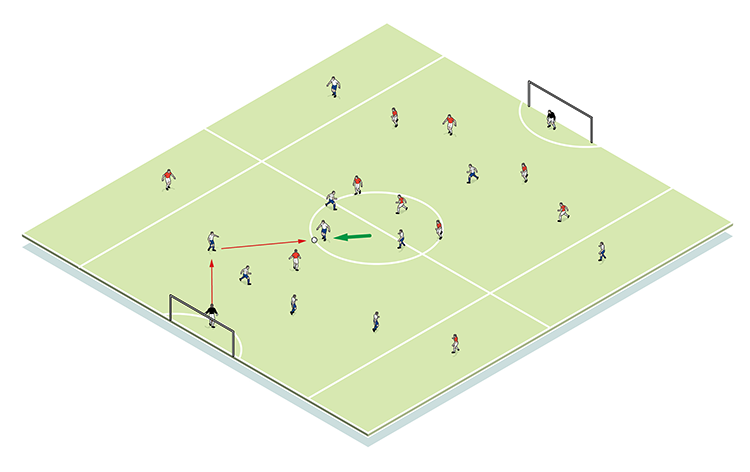
So to begin, we encourage the first pass into midfield. When a defender or midfielder is set to play a diagonal pass those around him must recognise if it is a shallow or a deep switch. Opponents and team mates move accordingly in order to present either obstacles or support (1b).
1b

In the initial phases, we’ll allow the pass to the wing to be unopposed, and for the winger to have a free cross into the box to be attacked. Attackers now rush in to get on the end of the cross, while the other winger moves in from the opposite flank to ‘lock the back door’ – in other words, to ensure that even if the cross is over-hit, the ball isn’t lost (1c).
1c
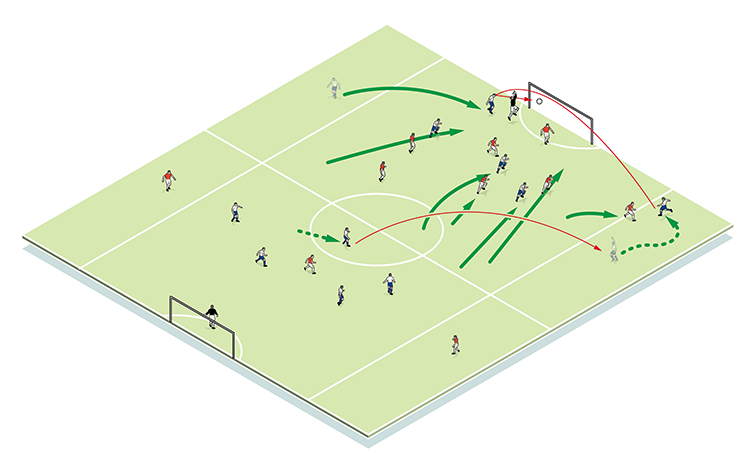
How do I progress the session?
In the first progression, the winger is now opposed in his channel. Beyond that, opponents can close down any pass, pressing defenders, midfielders and wingers, thus ensuring any attacking passes must be quick and well reasoned (2a).
2a
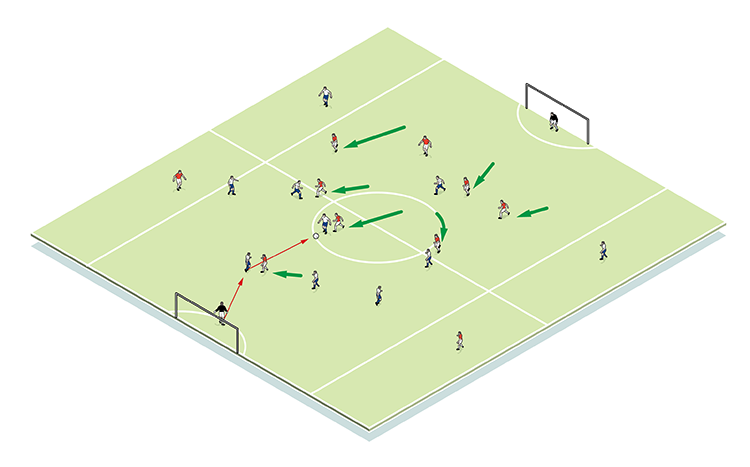
What are the key things to look out for?
Past the progression, the initial ball must always be played short into midfield so that opponents come in to press (and thus leave space behind). Attacking players should not ‘force the issue’ – they play the ball around until the killer diagonal pass is made. And when that happens, it must be clearly intended as a shallow or deep diagonal ball (2b), with the onward attack to follow (2c).
2b
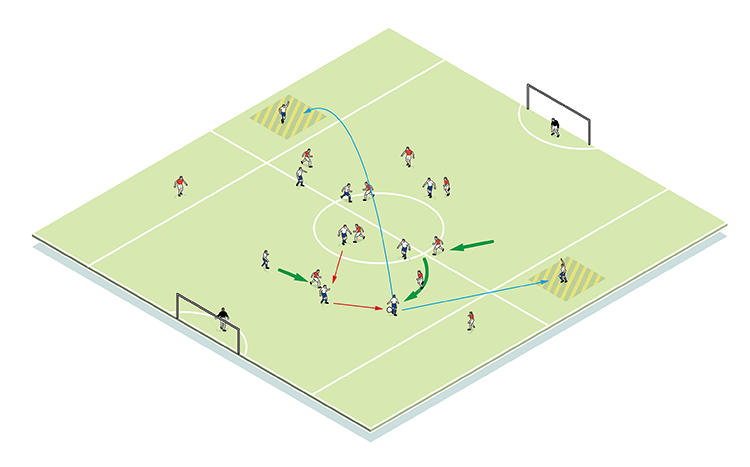
2c

Related Files
Editor's Picks
Using the goalkeeper in build-up play
Pressing principles
Intensive boxes drill with goals
Penetrating the final third
Creating and finishing
My philosophy
Pressing initiation
Compact team movement
Defensive organisation
Coaches' Testimonials

Alan Pardew

Arsène Wenger

Brendan Rodgers

Carlos Carvalhal

José Mourinho

Jürgen Klopp

Pep Guardiola

Roy Hodgson

Sir Alex Ferguson

Steven Gerrard
Related
Rousing, responsive and resilient
Third-player runs
Gareth Taylor: The path to success
Coaches' Testimonials

Gerald Kearney, Downtown Las Vegas Soccer Club

Paul Butler, Florida, USA

Rick Shields, Springboro, USA

Tony Green, Pierrefonds Titans, Quebec, Canada
Join the world's leading coaches and managers and discover for yourself one of the best kept secrets in coaching. No other training tool on the planet is written or read by the calibre of names you’ll find in Elite Soccer.
In a recent survey 92% of subscribers said Elite Soccer makes them more confident, 89% said it makes them a more effective coach and 91% said it makes them more inspired.
Get Monthly Inspiration
All the latest techniques and approaches
Since 2010 Elite Soccer has given subscribers exclusive insight into the training ground practices of the world’s best coaches. Published in partnership with the League Managers Association we have unparalleled access to the leading lights in the English leagues, as well as a host of international managers.
Elite Soccer exclusively features sessions written by the coaches themselves. There are no observed sessions and no sessions “in the style of”, just first-hand advice delivered direct to you from the coach.





